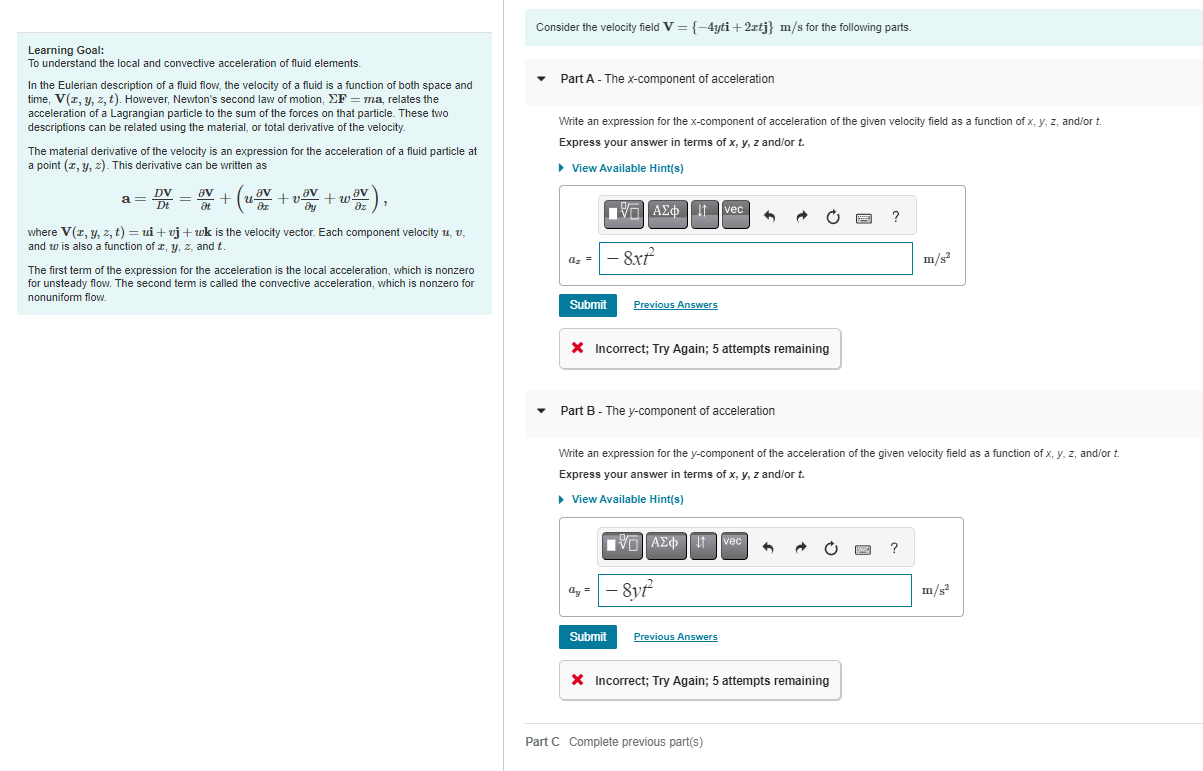Answered step by step
Verified Expert Solution
Question
1 Approved Answer
Learning Goal: To understand the local and convective acceleration of fluid elements. In the Eulerian description of a fluid flow, the velocity of a fluid
Learning Goal:
To understand the local and convective acceleration of fluid elements.
In the Eulerian description of a fluid flow, the velocity of a fluid is a function of both space and
time, However, Newton's second law of motion, relates the
acceleration of a Lagrangian particle to the sum of the forces on that particle. These two
descriptions can be related using the material, or total derivative of the velocity.
The material derivative of the velocity is an expression for the acceleration of a fluid particle at
a point This derivative can be written as
where is the velocity vector. Each component velocity
and is also a function of and
The first term of the expression for the acceleration is the local acceleration, which is nonzero
for unsteady flow. The second term is called the convective acceleration, which is nonzero for
nonuniform flow.
Consider the velocity field yti for the following parts.
Part A The component of acceleration
Write an expression for the xcomponent of acceleration of the given velocity field as a function of andor
Express your answer in terms of andor
View Available Hints
Previous Answers
Incorrect; Try Again; attempts remaining
Part B The component of acceleration
Write an expression for the component of the acceleration of the given velocity field as a function of andor
Express your answer in terms of andor
View Available Hints
Incorrect; Try Again; attempts remaining

Step by Step Solution
There are 3 Steps involved in it
Step: 1

Get Instant Access to Expert-Tailored Solutions
See step-by-step solutions with expert insights and AI powered tools for academic success
Step: 2

Step: 3

Ace Your Homework with AI
Get the answers you need in no time with our AI-driven, step-by-step assistance
Get Started


